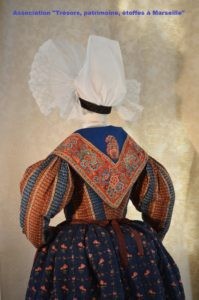
In an earlier blog, I mentioned that there was a Chintz exhibition at the Nantes Quilt Show we attended. We write about Chintz quite a bit because we love it, so I thought I would make do with the few shots in the earlier blog post. However, this week we ran onto an amazing array of reproduction fabrics, which reminded me of the fabrics of Provence. So, I decided I wasn’t done with the Nantes Quilt Show. Several people from the Association of Tresors, Patrimoine etoffes of Marseille gave a presentation on the quilts and costumes of the 18th and 19th century Provence. The organization was nice enough to provide an exhibition of the clothing as well as wear authentic clothing. Although I can’t imagine trying to go about daily tasks dressed in these outfits, not...






